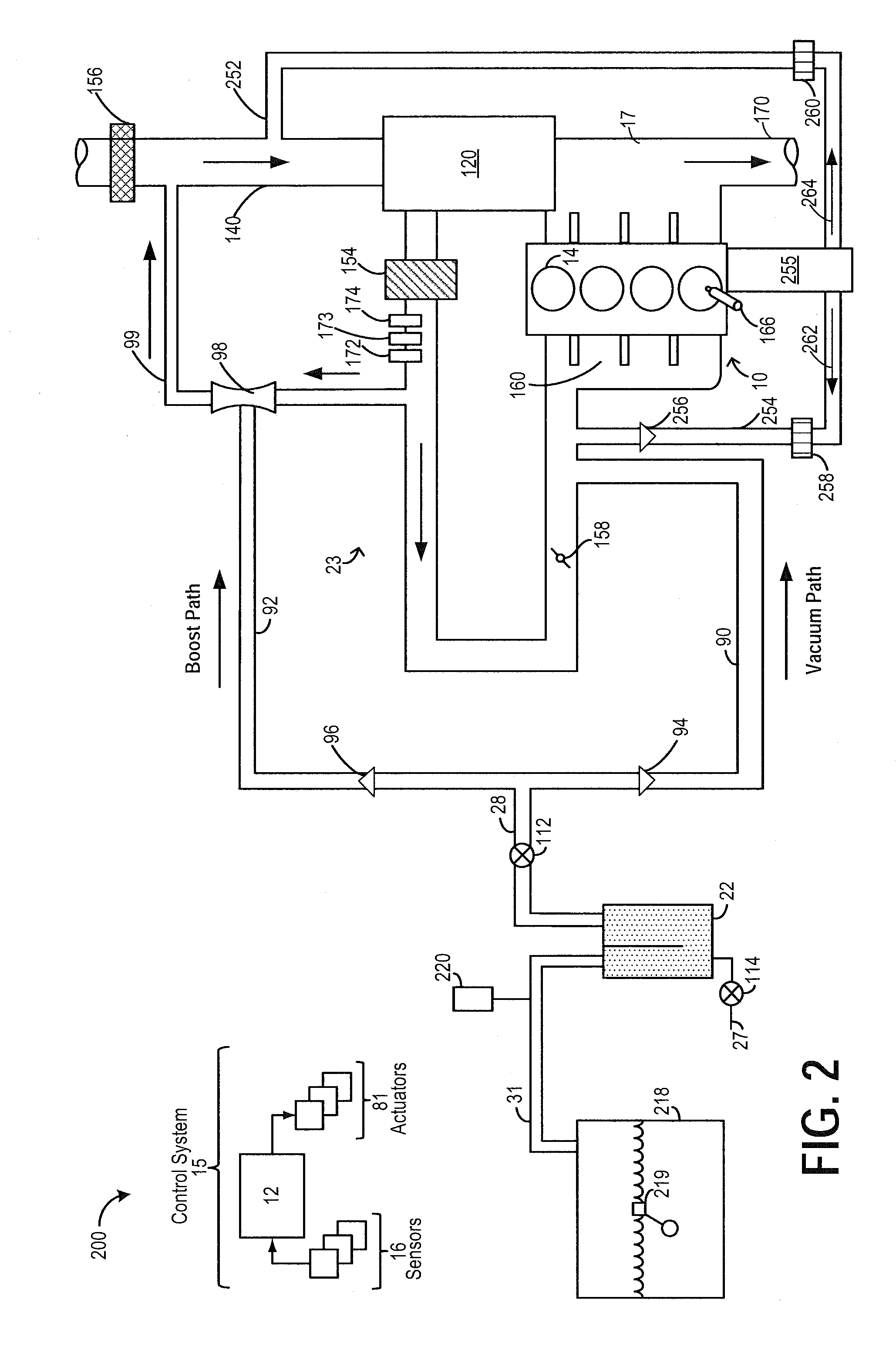Methods and systems for an intake oxygen sensor
a technology of gas constituent sensor and sensor, which is applied in the direction of mechanical equipment, machines/engines, electric control, etc., can solve the problems of sensor not providing an accurate estimate of how much excess fuel is in the egr, fuel system error, and incorrect adjustment of spark timing, throttle position, etc., to reduce regulated emissions and improve fuel economy.
- Summary
- Abstract
- Description
- Claims
- Application Information
AI Technical Summary
Benefits of technology
Problems solved by technology
Method used
Image
Examples
Embodiment Construction
[0014]The present description is related to methods and system for using an intake manifold sensor for sensing an amount of EGR flow to an engine system, such as the engine systems of FIGS. 1-2. To overcome the effect of rich or lean EGR, as determined by an exhaust gas oxygen sensor, on an output of an intake gas oxygen sensor, as shown at FIGS. 3A-C, an inferred EGR estimate may be adjusted with a correction factor. A controller may be configured to perform a control routine, such as the routine of FIG. 4 to learn an amount of excess fuel in rich EGR, or excess oxygen in lean EGR, ingested into the engine and adjust an EGR flow accordingly. An output of the sensor, as well as an EGR dilution estimated by the sensor, may be adjusted to compensate for the effect of varying EGR air-fuel ratio on the output of the sensor. In this way, accuracy of EGR estimation by an intake oxygen sensor is increased.
[0015]FIG. 1 shows a schematic depiction of an example turbocharged engine system 100...
PUM
 Login to View More
Login to View More Abstract
Description
Claims
Application Information
 Login to View More
Login to View More - R&D
- Intellectual Property
- Life Sciences
- Materials
- Tech Scout
- Unparalleled Data Quality
- Higher Quality Content
- 60% Fewer Hallucinations
Browse by: Latest US Patents, China's latest patents, Technical Efficacy Thesaurus, Application Domain, Technology Topic, Popular Technical Reports.
© 2025 PatSnap. All rights reserved.Legal|Privacy policy|Modern Slavery Act Transparency Statement|Sitemap|About US| Contact US: help@patsnap.com



